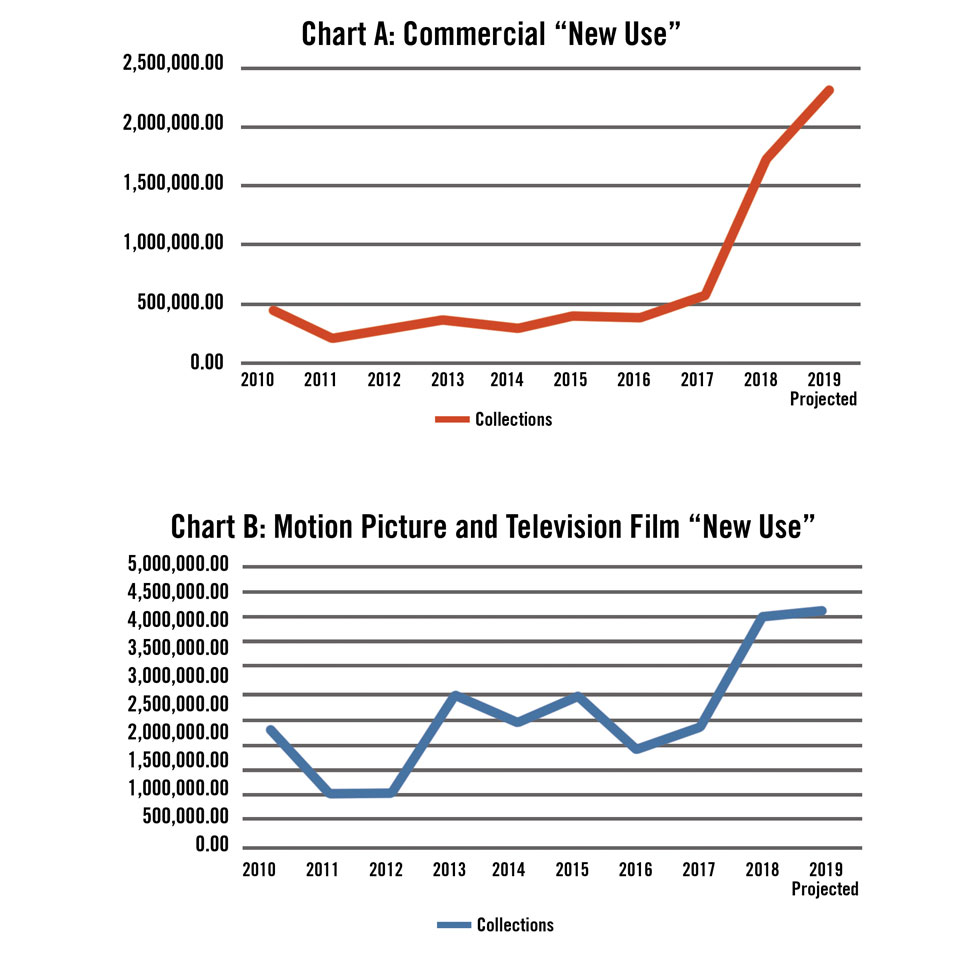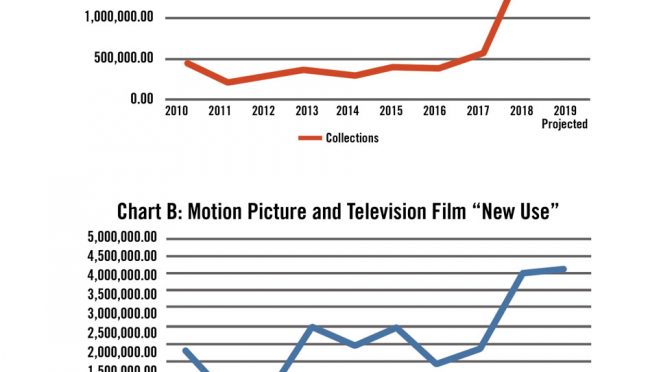New Use Collections Are at an All-time High; This Is How You Can Get a Piece of the Pie

by Alyson Sheehan, AFM Electronic Media Services Division Administrative Assistant
You’re sitting on your couch flipping through the channels when suddenly you hear a familiar tune. That’s when you realize: you played on that song! And now it’s being used in a commercial! Likely, the record label that owns and controls the master recording has licensed it to an advertising agency for use in a commercial spot. This may be considered a “New Use” and trigger additional compensation for you, but there are a few things that need to happen before you put a down payment on that condo:
1. A New Use can be defined as a track that was recorded pursuant to an AFM agreement for one purpose, now being used for another purpose. So, the first question to ask yourself is: Was this recording made pursuant to an AFM Agreement? Not that you would ever intentionally play on a dark date … but maybe you didn’t confirm that the employer was a signatory to the proper AFM agreement before making the recording and only found out later that it was a non-union gig. If so, unfortunately, we will not be able to assist you in securing the New Use payments to which you would have otherwise been entitled, had the original recording work been covered.
2. If you’re pretty sure that this was a covered recording session employed by an AFM signatory, the next question is: Was a B-form filed to report this work? Did you by any chance happen to get a copy of that B-form, or keep any payment records, check stubs, or proof of employment? It is extremely helpful if you can provide any information and/or documentation in connection with that original recording session.
3. The next step is to talk to your local officer. Explain the New Use to the best of your ability, both the original track and what it was licensed into, and provide the local officer with any documentation you have. If this is the same local in which the original recording work took place, they might have the B-form on file. The local officer will assess the situation and help as much as possible to determine whether a New Use payment is applicable.
4. If your local officer agrees that a New Use payment may be applicable under the circumstances which you have described, they will notify the AFM National Office’s Electronic Media Services Division (that’s us!). If the New Use is any type of previously recorded music being licensed for use in a commercial announcement (that the recording was not originally intended for) then I am the point person in EMSD to assist. If the previously recorded material was licensed into a motion picture or television film, members of the EMSD staff at our West Coast office will be able to assist (you can find specific job descriptions here).
Of course, these are not the only things that previously recorded music is licensed into; especially in today’s world, the options are almost limitless. If the reported New Use doesn’t fall into either of those categories, I’m happy to take any and all New Use related inquiries from local officers and point them in the correct direction.

As you can see in charts A and B, licensing recorded music is becoming pretty popular, and our New Use collections have skyrocketed in the past two years. We hope to continue to have these figures climb, not only to reflect the trends of the industry but to exceed them by also increasing the efficiency of our billing process.
We are constantly working with licensees and licensors alike to bill for these New Uses more quickly and efficiently, so we can get money to the musicians who earned it. As your track moves from a sound recording to a film score to a commercial announcement and back around again, taking on a life of its own, you deserve to feel proud and fairly compensated for your contribution to the entertainment industry.




